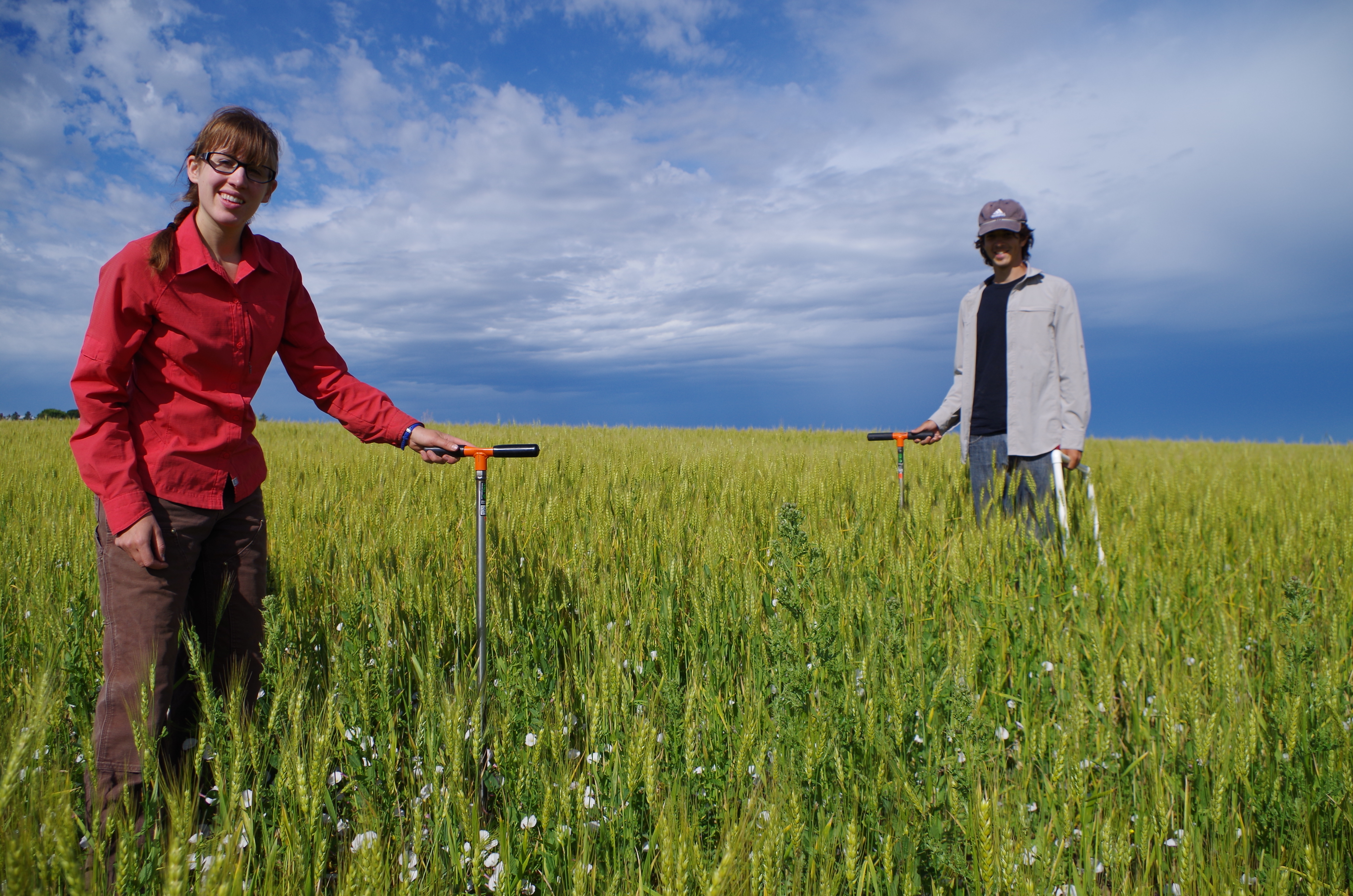The second paper from Tindall’s master’s work at Montana State University in the Menalled Lab has been accepted for publication! Tindall defended her master’s in August 2021, and has been working at a plant production company in Bozeman since then.
Ouverson, T., Boss, D., Eberly, J., Seipel, T., Menalled, F.D., Ishaq, S.L. 2022. Soil bacterial community response to cover crops, cover crop termination, and predicted climate conditions in a dryland cropping system. Frontiers in Sustainable Food Systems.
Abstract
Soil microbial communities are integral to highly complex soil environments, responding to changes in aboveground plant biodiversity, influencing physical soil structure, driving nutrient cycling, and promoting both plant growth and disease suppression. Cover crops can improve soil health, but little is known about their effects on soil microbial community composition in semiarid cropping systems, which are rapidly becoming warmer and drier due to climate change. This study focused on a wheat-cover crop rotation near Havre, Montana that tested two cover crop mixtures (five species planted early season and seven species planted mid-season) with three different termination methods (chemical, grazed, or hayed and baled) against a fallow control under ambient or induced warmer/drier conditions. Soil samples from the 2018 and 2019 cover crop/fallow phases were collected for bacterial community 16S rRNA gene sequencing. The presence and composition of cover crops affected evenness and community composition. Bacterial communities in the 2018 ambient mid-season cover crops, warmer/drier mid-season cover crops, and ambient early season cover crops had greater richness and diversity than those in the warmer/drier early season cover crops. Soil microbial communities from mid-season cover crops were distinct from the early season cover crops and fallow. No treatments affected bacterial alpha or beta diversity in 2019, which could be attributed to high rainfall. Results indicate that cover crop mixtures including species tolerant to warmer and drier conditions can foster diverse soil bacterial communities compared to fallow soils.

Related works from that research group include:
- Temporal soil bacterial community responses to cropping systems and crop identity in dryland agroecosystems of the Northern Great Plains.
- Dryland cropping systems, weed communities, and disease status modulate the effect of climate conditions on wheat soil bacterial communities.
- Soil bacterial communities of wheat vary across the growing season and among dryland farming systems.
- Agroecosystem resilience is modified by management system via plant–soil feedbacks
- A living soil inoculum increases soil microbial diversity, crop and weed growth using soil from organic and conventional farms in northeastern Montana.



























